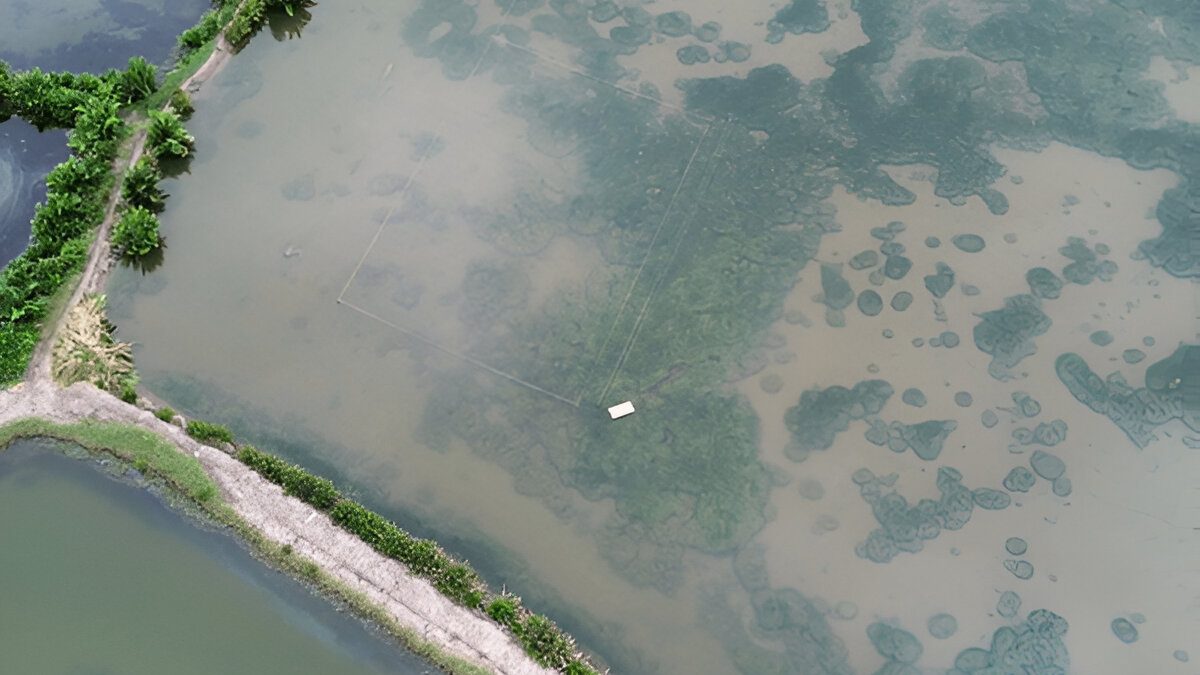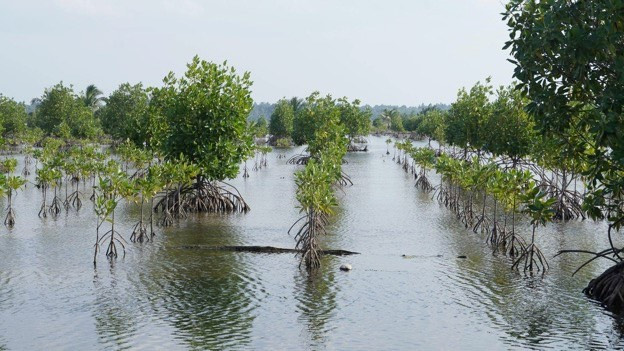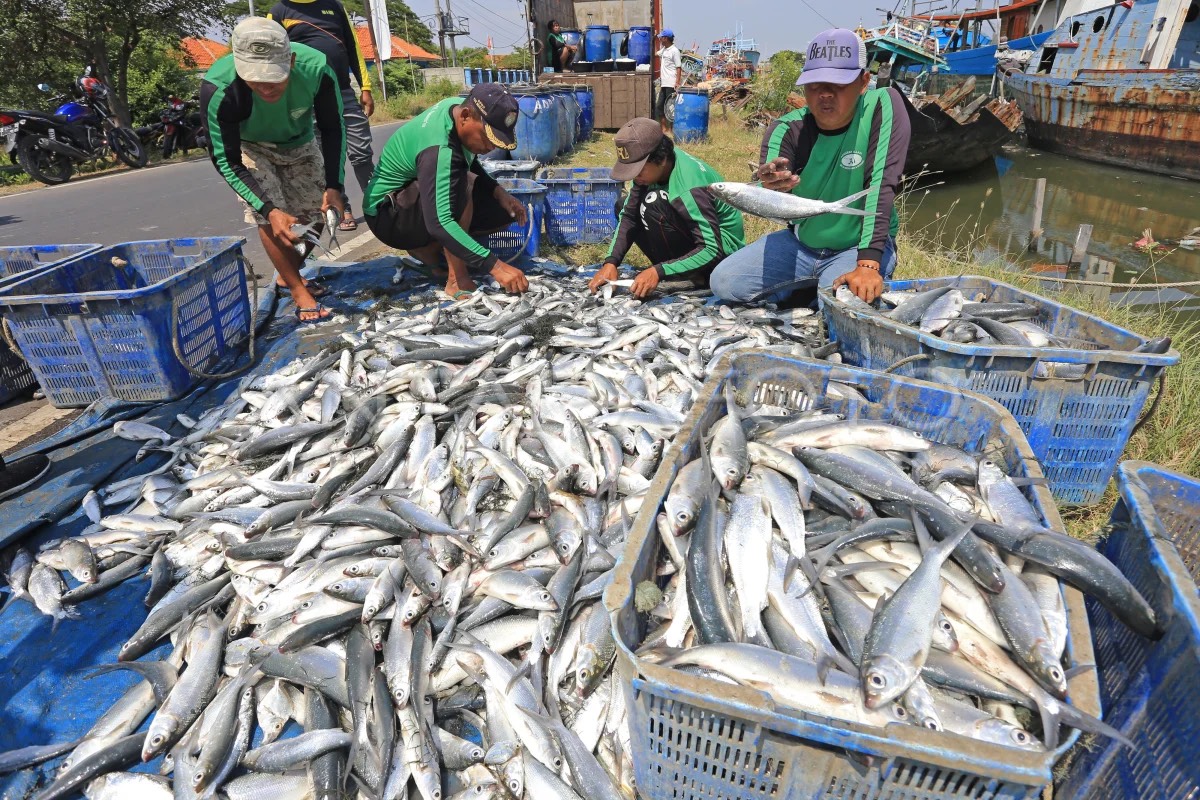Coastal Life Opinion: A Decent Life on the Coast Is Possible, If We Get the System Right

Drone footage of silvofishery pond (Photo Credit : Arif Yoga Pratama)
It doesn’t take a miracle to improve life in coastal communities. But it does take a system that works, and the will to commit to it together.
Along Indonesia’s northern coastline, communities are grappling with more than just the rising tide. Climate change is no longer a distant threat. It’s shifting shorelines, altering salinity levels, damaging ponds, and making weather patterns unpredictable. But beyond these headlines, the real challenges remain deeply practical.
Fish and shrimp ponds (tambak) often underperform not because people lack skills, but because water can’t circulate. Mangroves are planted with good intention but often left unmanaged. Fishermen catch less, not from lack of effort, but because the fish stocks have left in polluted or overexploited water. And even when the catch is good, poor handling, lack of cold storage, and unreliable access to market leads to low prices, product loss, and mounting frustration.
These aren’t signs of failure. They’re signs of a system that hasn’t been fully connected. Because in reality, these problems are part of the same chain: from protecting the coast, to enabling production, to ensuring fair and steady income. And that’s where change needs to begin.
First, we need to start upstream.

Mangrove trees at shrimp farm are rehabilitated using silvofishery techniques (Photo Credit : BRGM)
Fix the ponds. Thousands of hectares of ponds are underperforming not because of the unskilled farmers, but because their ponds have no proper water flow and basic inlet-outlet systems. Stagnant water leads to disease, poor yields, and increases risk. A simple improvement such as gravity-fed canals, low-cost pumps, better pond layout, can make a meaningful difference. This isn’t high-tech. It’s a basic functionality.
Bring mangroves back with a plan. Silvofishery, the integration of mangrove and aquaculture, has shown a success in parts of Central Java. It works when done right. Mangroves protect ponds from erosion and storm surge, they filter pollutants and improve the microclimate. But planting alone isn’t enough. It takes careful zoning, sustained community engagement, and regular care to make it last.
Then, we move midstream.

Shrimp harvesting (Photo Credit : Trieu Tuan)
Organize the supply chain. Once the fish or shrimp are harvested, the clock is ticking. Without access to cold storage, sorting facilities, or even basic scheduling, products value quickly declines. In many areas, the price drops not because of quality, but because of handling and timing. With basic infrastructure and a community-managed supply system, this can change.
Fix the flow, not just the fish.

Fish post-harvesting (Photo Credit : Dedhez Budget/ANTARA PHOTO)
Many coastal villages operate without any structured coordination between farmers, traders, transporters, or local governments. The result is good harvests rot in the sun while buyers complain about inconsistency. This is where cooperative models, digital tracking , and local leadership can make a difference.
And finally, we reach downstream.

Frozen shrimp (Photo Credit : CGN089)
Ensure fair and reliable market access. It's not just about producing seafood, it's about making sure communities can sell it at a fair price. That means connecting to local and regional markets, supporting small-scale branding, and building certification systems that add value. These communities produce quality products. They should see the value returned.
The system isn’t broken. It just hasn’t been built well enough.
Many past efforts had good intentions but often fell short because they were designed from the top down, without deep alignment to local needs. Now, we have a chance to do better:
- From short-term projects to lasting partnerships
- From outside aid help to local ownership
- From fragmented fixes to integrated planning
A decent life on the coast should not be the exception. It should be the standard. Livelihoods in coastal villages must be viable, resilient, and dignified, especially in the face of a changing climate.
It starts with better ponds, smarter planning, and stronger connections. It grows with cooperation, shared purpose, and mutual respect.
And yes, it takes time. But it’s absolutely possible.
Fix the basics. Stay committed. Build it together. And the rest will follow.
-Rika Novida

